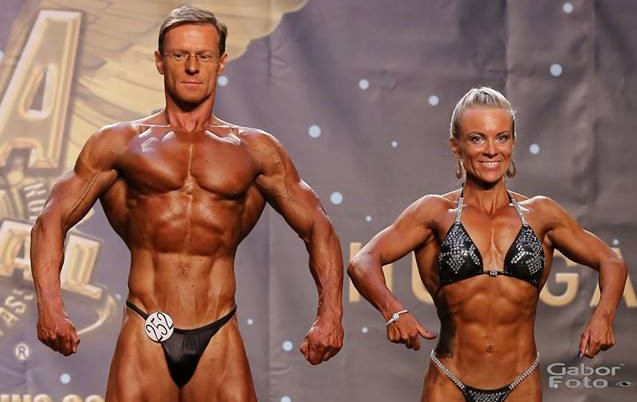Powerliting Basics
Powerlifting is a competitive sport that is also used to develop
the body and help athletes prepare for other sports. Powerlifting
allows you to strengthen and perfect your body, test your
abilities and help you feel good about yourself. The sport of
powerlifting was developed to test the strength of its competitors
in three events; the squat, the benchpress and the deadlift.
The Squat:
In the squat, the barbell is positioned horizontally across the back
of the shoulders; the hands steady and balance the bar. From a
standing position, the lifter bends the knees and lowers the body
until the top surface of the legs at the hip joint is lower than the
top of the knees. This defines a correct squat depth; few people
in the gym squat to this depth. From this lowered position, the
lifter returns to an upright, standing position. Contrary to popular
belief, the squat is not unusually tough on the lower back or knees.
If done properly - straight, upright back, knees in alignment with
feet - you should experience only the soreness indicative of a good
workout.
The Bench Press:
Most people are familiar with the Bench Press -- lower a barbell
to your chest and push it up, right? Well, there's a bit more to
the technique in competitive powerlifting. First of all, there's
a pause at the bottom. After you've lowered the bar to your chest
and it is still, you are given the command to "press" it up. No
bouncing the bar off your chest. Also, your head, shoulders, and
buttocks must remain on the bench and the feet must be flat on the
floor. These contact points cannot move during the lift. Sometimes
you see lifters get an arch in their back between the buttocks and
shoulders.
The Deadlift:
The deadlift involves lifting a loaded barbell from the floor (the
bar is actually about 10" off the ground) to a standing position.
There are two general styles of deadlifting: conventional and sumo.
With conventional style, the feet are fairly close together, and the
hands grasp the bar outside of the legs. The knees and hips are
bent and do the majority of the lifting; the back must remain as
straight and upright as possible. Sumo style uses a very wide
stance and the arms grasp the bar in front of and between the legs.
In some cases, the stance is so wide that the toes almost touch the
plates at either end of the barbell. From the lowered position,
the knees and hips are used to drive the body upward. This style
is favored often by taller people with longer arms. The deadlift
is probably the easiest lift to judge - it goes up or it doesn't.
However, sometimes a lifter will "hitch" or ride the weight up
his or her legs. This is not allowed. The lifter must "lock out"
or be in a full standing position, not hunched forward.
Lose Fat, Gain Muscle, Shape Up. Sign up for our Free Weekly Bodybuilding, Fitness and Health Tips Newsletter,and you will be automatically entered in our monthly drawing to win Free Supplements and other great prizes. Stay informed, stay motivated, win free stuff, join today!
Click Here To Sign Up Free
Saturday, July 07, 2007
Subscribe to:
Posts (Atom)

